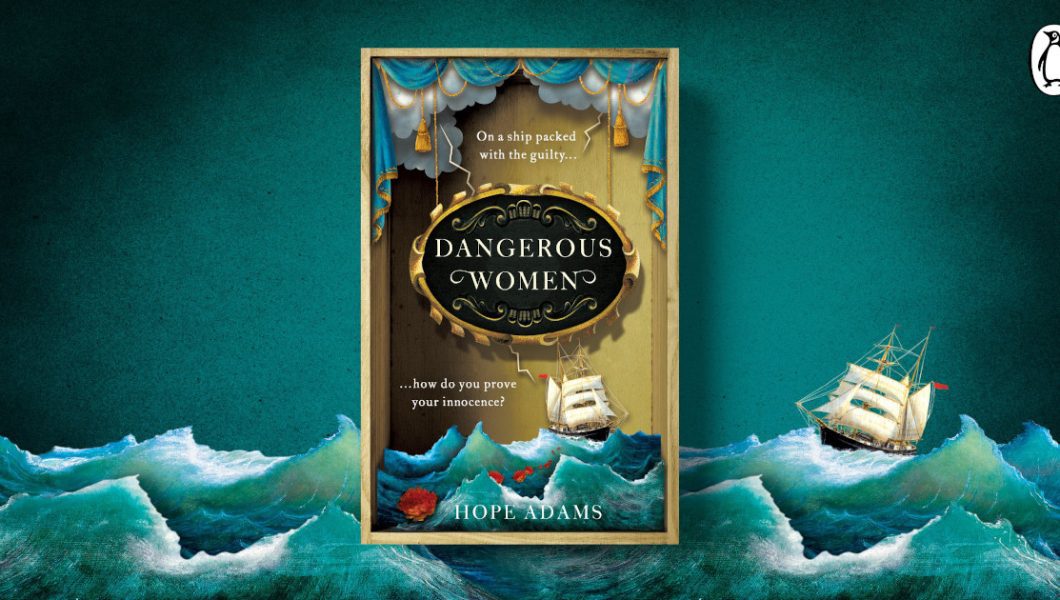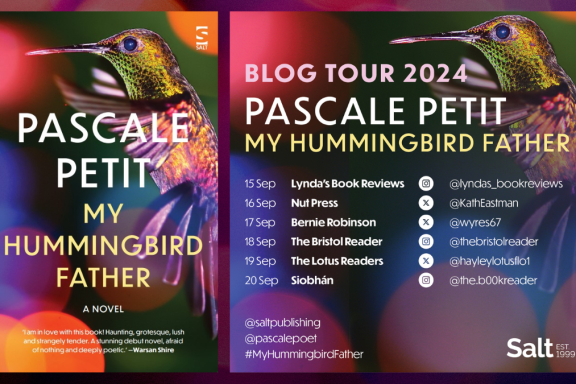The locked-room murder mystery that she’s neatly stitched it into is entirely her own creation but the inspiration behind Hope Adams’ novel Dangerous Women is the Rajah quilt, an actual quilt made by convicts on their 1841 voyage of transportation from London to Van Diemen’s Land. (What we now know as Tasmania, Australia’s island state, following a name change in 1856.) The gorgeous finished hardback includes a reproduction of the Rajah quilt on its endpapers, which I kept flicking to, trying to identify the square mentioned in each chapter heading. (Clearly, you don’t have to do this unless, like me, you’re also a total book nerd.)
London, 1841. The Rajah sails for Australia. On board are 180 women convicted of petty crimes, sentenced to start a new life half way across the world. Daughters, sisters, mothers – they’ll never see home or family again. Despised and damned, all they have now is each other.
Until the murder.
As the fearful hunt for a killer begins, everyone on board is a suspect. The investigation risks tearing their friendships apart . . . But if the killer isn’t found, could it cost them their last chance of freedom?
I am, as you know, easily lured in by any book cover with the sea or a ship on it. When I saw early proofs going out, I wasn’t only hooked by the cover but its tagline: On a ship packed with the guilty, how do you prove your innocence? Dangerous Women sailed onto my 2021 TBR and, as soon as I started reading it, quickly reeled me in.
Almost two hundred women sailed on the Rajah, which, along with the ship’s crew, would make an unmanageable cast of characters. Hope Adams instead wisely chooses to focus her story on a young woman called Clara, who makes the Rajah her unlikely choice of escape route; the ship’s Captain, Charles Ferguson, and her Surgeon, Mr Donovan, together with the Reverend Mr Davies; the Newgate Nannies, a seasoned trio of cons, the young Matron, Kezia Hayter, and the eighteen women she selects to work together on the quilt.
It’s through this microcosm that Hope Adams shares the hopes and fears, preoccupations, jealousies, and concerns, loves and losses of all those aboard the Rajah and gave me a very real sense of how bewildering it must have felt for these women, most of whom were convicted of petty crimes and taken straight from prison with no chance of saying goodbye to friends and family, before being put on a boat, which rowed them out to a bigger boat bound for the other side of the world. There’s a stark contrast between their mandatory sentences and Kezia’s own, more voluntary voyage of discovery. They’re all making an arduous journey to the other side of the world but it’s one where these women have no idea what awaits them. It must have been especially terrifying when their crimes were so often petty ones, fuelled by hunger, poverty and desperation, or brought about by the violent, drunk or simply all too often absent men in their lives.
It’s interesting to see how the women (including the young Matron) are treated and perceived by the ship’s crew and officers and how often this contrasts with Kezia’s own attitude towards them, where she attempts to see beyond the crime and get to know each woman as an individual with her own backstory and specific concerns. What’s even more fascinating are the relationships between the women themselves, the way they cope with life on board ship, their interactions with each other and members of the crew, how they naturally hive off into smaller groups and how these are put under strain and tested, how they view the quilting task they’ve been chosen for, as well as Kezia herself, the person who’s selected them for it and oversees it.
She may be young and naive but I quickly warmed to Kezia Hayter, largely thanks to her inner dialogue, as she tries to approach her task by being fair and kind but firm with everyone while also standing up for herself. It was wonderful to see how her character develops under extremely trying circumstances over the course of the book. What are already confined and difficult living conditions is further exacerbated by the attack upon one of the women on board ship. This tests the women’s fledging friendships, their nerves and characters, and none more so here than Kezia’s when she takes a place on the committee set up to question the women and try and discover the perpetrator.
Dangerous Women provides a fascinating look at life on board a transport ship bound for Australia in 1841. It’s also a compelling crime story, having to be solved by the time they dock in Hobart, which has at its heart a young woman, who not only has to make her voice heard but also those of the women under her care, amid all the fear, suspicion, intrigue and even romance found in life aboard this convict ship.
Dangerous Women is equal parts historical novel and locked-room murder mystery with a dash of romance on a sea-faring voyage, which sets out from Victorian England. A story as captivating and intricately stitched together as the exquisite quilt which inspired it.
Dangerous Women by Hope Adams is published by Penguin Michael Joseph, an imprint of Penguin Books UK. It is available as an audiobook, ebook and in hardback. You can find it at Amazon UK, Bookshop UK, Hive or Waterstones. Hope Adams was born in Jerusalem and now lives near Cambridge. She has written books for children and adults as Adèle Geras. For more info, check out her Author Website or you can find her on Instagram or on Twitter.
My thanks to Gaby Young of the publisher for providing a review copy via NetGalley.
The Dangerous Women blog tour began on 4 March and runs until 18 March, featuring all these brilliant bookbloggers:







I’ve seen this around and it sounds amazing!
Wow what a great scenario – this sounds fantastic. Great review too, Kath – I’ll definitely look for this. Thanks
I have an electronic copy but your mention of those end papers has convinced me I need to get this as a physical book.
By coincidence I’ve been reading some real life accounts of other women who were transported, as you say for petty offences. The woman I was looking at got 7 years transportation for stealing clothes – no indication that she was a habitual offender. The reports of the surgeons on board make fascinating reading – they claim the women were well cared for but 3 months in close confinement wouldnt have been comfortable at all